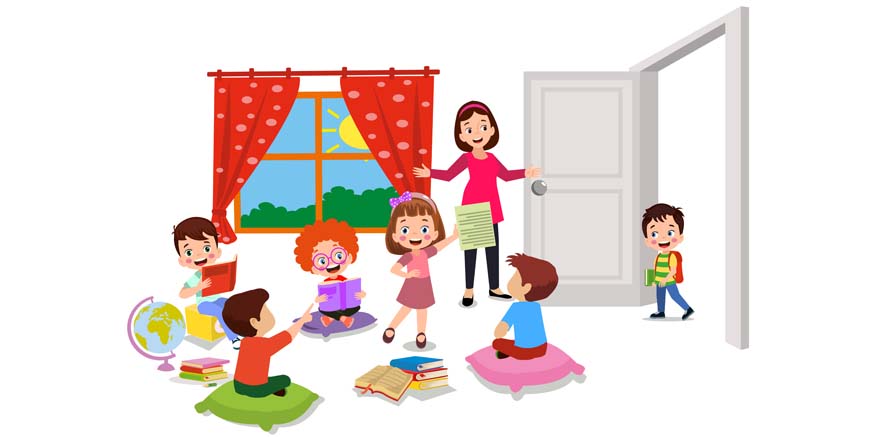Imagine your child lost in a book, carried away to a world of exciting quests, limitless wisdom, and limitless opportunities. It’s as if you give them a magic key to open these similar places by teaching them to read. Trust me, Reading for kids or teaching kids how to read is fun. It’s a thrilling tour that’s full of learning opportunities and special times spent with kids and parents. Early reading instruction is especially crucial for children in India, where education is highly prized. This guide will walk you through easy and pleasurable stages to help your child learn to read so the whole family can enjoy the process of teaching kids.
Understanding the Importance of Reading
The development of your child depends on reading. It sharpens their verbal abilities, expands their imagination, and facilitates their comprehension of and interaction with the outside world. Early readers typically achieve academic success and cultivate a lifelong love of learning. Reading together improves your relationship and adds delight to the learning process. Now that you have understood the importance of reading, let us look at some simple steps to teach reading or teach kids to read.
Step 1: Start Early with the Basics
The journey to teach kids to read starts at birth. Engage your child with sounds, words, and visuals. Read aloud to them, pointing out and labelling objects around the house and during outings. This early exposure helps them associate words with objects and actions, laying a strong foundation for reading skills.
Tips:
Use picture books to create a visual association.
Sing nursery rhymes and simple songs.
Introduce alphabets casually through everyday interactions.
Step 2: Make Reading Interactive
As your child grows, it’s important to make reading interactive. Ask questions about the pictures and stories you read together. This not only keeps them engaged but also helps develop comprehension skills. Encourage them to turn the pages and let them choose books that interest them.
Tips:
Use finger puppets to bring stories to life.
Let children retell the story in their own words.
Discuss the story’s events and characters to develop analytical skills.
Step 3: Incorporate Phonics
Phonics is like a guide that helps students understand, recognize, and play around with individual sounds, which we call phonemes. It shows them how these sounds match up with the letters on the page, called graphemes, which makes learning to read and spell a whole lot simpler. Start by teaching kids basic phonetic sounds and then gradually mix them up to create words.
Tips:
Simple consonant-vowel-consonant words like dog, hat, and cat are a good place to start.
Play phonics games and download apps meant for young students.
Be patient and consistent with your phonics instruction.
Step 4: Build Vocabulary
A rich vocabulary is crucial for reading comprehension. Read a variety of books and discuss new words. However, don’t just stop at reading; encourage your child to use new words in sentences verbally.
Tips:
Introduce a “word of the day” to build habit and excitement.
Use flashcards to reinforce new words.
Engage in activities that require reading instructions, like simple cooking recipes or crafting.
Step 5: Set a Routine
Instructing children to read requires consistency. Allocate a specified period of time every day for reading. This not only develops a routine but also signals to your child that reading is important.
Tips:
Have a cozy reading nook.
Ensure the reading session is free of distractions like TV or loud noises.
Keep the sessions joyful and pressure-free.
Step 6: Use Technology Wisely
In today’s digital age, screens are inevitable. Use them wisely to enhance reading skills. There are numerous apps that teach reading through games and stories designed specifically for children.
Tips:
Choose educational apps that focus on phonics and storytelling.
Limit screen time to ensure it remains a tool rather than a distraction.
Watch educational shows that promote storytelling and critical thinking.
Step 7: Encourage Writing
Reading and writing are interconnected. Urge your kids to write basic journal entries, letters, or even book summaries. This strengthens their writing skills in addition to their reading comprehension.
Tips:
Provide them with their own notebook or diary.
Help them write letters to family members or friends.
Discuss what they write to show interest and appreciation.
Step 8: Be Patient and Positive
Every child is different, and so is their learning pace. Stay patient and keep the learning environment positive. Praise their efforts, regardless of how small they may seem. Your encouragement is their motivation.
Tips:
Celebrate small victories to boost their confidence.
Avoid criticism that might discourage them.
Tailor the learning pace to suit your child’s individual needs.
Step 9: Lead by Example
Children often emulate their parents. Let them see you read. Showing an interest in reading, whether through books, newspapers, or magazines, can greatly stimulate children to read.
Tips:
Share interesting facts or stories you read.
Have discussions about books in front of them.
Make a family reading time where everyone reads their book.
Step 10: Use Books in Native Languages
Reading to your child in their mother tongue might have several advantages above just English. It helps them connect with their cultural roots and improves overall language skills.
Tips:
Choose storybooks in your native language.
Read folk tales and traditional stories.
Encourage grandparents to tell stories in their native tongue.
Step 11: Visit Libraries and Bookstores
Make reading an adventure by bringing your child to libraries and bookstores! It opens up a whole world of books for them to dive into, letting them discover all sorts of genres and topics.
Tips:
Make library visits a regular outing.
Let your child choose their own books..
Participate in story hours and reading events.
Step 12: Incorporate Playful Learning
Let’s make reading fun by adding games and playful activities! Kids soak up knowledge when they’re enjoying themselves, and using games can help solidify what they pick up during reading time.
Tips:
Use board games that involve reading and spelling.
Play word search puzzles and crosswords.
Engage in role-playing games that involve following written instructions.
The process of teaching children to read or reading for kids is rewarding and fun, and it sets the stage for their success in the future. You can encourage your youngster to love reading and learning by following these easy steps. Consider enrolling your child in Mother’s Pet Kindergarten if you’re searching for a nurturing setting to help them develop their reading skills. Their programs are made to guarantee your child’s bright future and to encourage a love of studying. Visit the website to know more!













Recent Comments